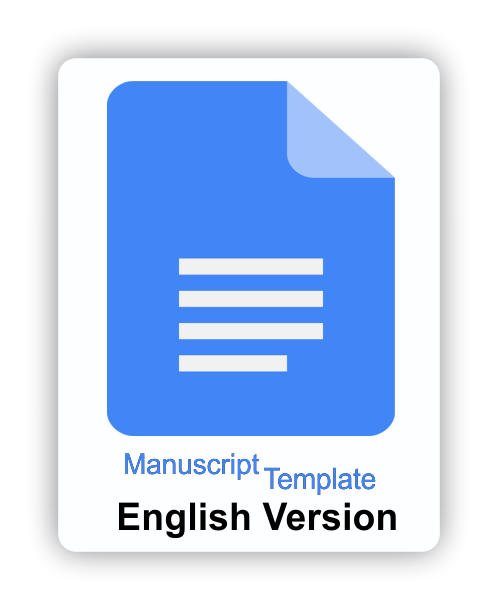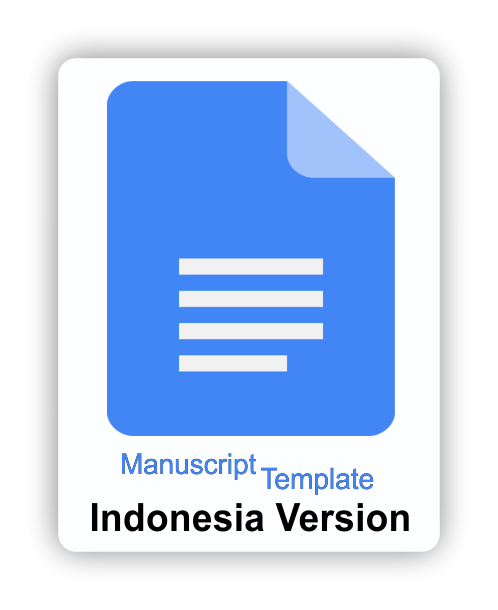The effect of inquiry-based learning assisted by story-map on students' spatial thinking skills in seismic studies
Downloads
Adawiyah, S. R., & Haolani, A. (2021). Kajian teoritis penerapan self-assessment sebagai alternatif asesmen formatif di masa pembelajaran jarak jauh. Jurnal Ilmiah Mandala Education, 7(3). https://doi.org/10.36312/jime.v7i3.2307
Adnan, G., Zulfikar, T., Armia, M. S., Gade, S., & Walidin, W. (2021). Impacts of inquiry learning model on students' cognitive and critical thinking ability. Cypriot Journal of Educational Sciences, 16(3), 1290–1299. https://doi.org/10.18844/CJES.V16I3.5851
Aldilha Yudha, S. F., Yulkifli, & Yohandri. (2019). Validity of student worksheet based on guided inquiry learning model assisted by digital practicum tool. Journal of Physics: Conference Series, 1185(1). https://doi.org/10.1088/1742-6596/1185/1/012058
Aliman, M., Ulfi, T., Lukman, S., & Muhammad, H. H. (2019). Konstruksi tes kemampuan berpikir spasial model sharpe-huynh. Jurnal Georafflesia, 4(1), 1–11. https://doi.org/10.32663/georaf.v4i1.738
Astawa, I. B. M. (2022). Peningkatan spatial thinking skills siswa dalam pembelajaran geografi melalui metode demonstrasi berpendekatan kontekstual. Journal of Education Action Research, 6(2), 242–251. https://ejournal.undiksha.ac.id/index.php/JEAR/article/view/45526%0Ahttps://ejournal.undiksha.ac.id/index.php/JEAR/article/download/45526/22152
Cope, M. P., Mikhailova, E. A., Post, C. J., Schlautman, M. A., & Carbajales-Dale, P. (2018). Developing and evaluating an ESRI story map as an educational tool. Natural Sciences Education, 47(1), 1–9. https://doi.org/10.4195/nse2018.04.0008
Egiebor, E. E., & Foster, E. J. (2019). Students' perceptions of their engagement using GIS-story maps. Journal of Geography, 118(2), 51–65. https://doi.org/10.1080/00221341.2018.1515975
Favier, T. T., & Van Der Schee, J. A. (2012). Exploring the characteristics of an optimal design for inquiry-based geography education with Geographic Information Systems. Computers and Education, 58(1), 666–677. https://doi.org/10.1016/j.compedu.2011.09.007
Fitriyah, C. Z., & Wardani, R. P. (2022). Paradigma kurikulum merdeka bagi guru sekolah dasar. Scholaria: Jurnal Pendidikan Dan Kebudayaan, 12(3), 236–243. https://doi.org/10.24246/j.js.2022.v12.i3.p236-243
Groshans, G., Mikhailova, E., Post, C., Schlautman, M., Carbajales-Dale, P., & Payne, K. (2019). Digital Story Map Learning for STEM disciplines. Education Sciences, 9(2), 1–17. https://doi.org/10.3390/educsci9020075
Holden, S. D., & Sahyar, S. (2015). Pengaruh model pembelajaran inkuiri terbimbing berbasis eksperimen riil dan laboratorium virtual terhadap hasil belajar fisika siswa. Jurnal Pendidikan Dan Kebudayaan, 21, 299–315. https://doi.org/10.24832/jpnk.v21i3.192
Huynh, N. T., & Sharpe, B. (2013). An assessment instrument to measure geospatial thinking expertise. Journal of Geography, 112(1), 3–17. https://doi.org/10.1080/00221341.2012.682227
Indarta, Y., Jalinus, N., Waskito, W., Samala, A. D., Riyanda, A. R., & Adi, N. H. (2022). Relevansi kurikulum merdeka belajar dengan model pembelajaran abad 21 dalam perkembangan era society 5.0. Edukatif : Jurnal Ilmu Pendidikan, 4(2), 3011–3024. https://doi.org/10.31004/edukatif.v4i2.2589
Kerski, J. J. (2015). Geo-awareness, geo-enablement, geotechnologies, citizen science, and storytelling: geography on the world stage. Geography Compass, 9(1), 14–26. https://doi.org/10.1111/gec3.12193
Komalasari, B. S., Jufri, A. W., & Santoso, D. (2019). Pengembangan bahan ajar IPA berbasis inkuiri terbimbing untuk meningkatkan literasi sains. Jurnal Penelitian Pendidikan IPA, 5(2), 219–227. https://doi.org/10.29303/jppipa.v5i2.279
Kriewaldt, J., Robertson, L., Ziebell, N., Di Biase, R., & Clarke, D. (2021). Examining the nature of teacher interactions in a collaborative inquiry-based classroom setting using a kikan-shido lens. International Journal of Educational Research, 108(March), 101776. https://doi.org/10.1016/j.ijer.2021.101776
Kuisma, M. (2018). Narratives of inquiry learning in middle-school geographic inquiry class. International Research in Geographical and Environmental Education, 27(1), 85–98. https://doi.org/10.1080/10382046.2017.1285137
Lee, J., & Bednarz, R. (2009). Effect of GIS learning on spatial thinking. Journal of Geography in Higher Education, 33(2), 183–198. https://doi.org/10.1080/03098260802276714
Makar, K., & Fielding-Wells, J. (2018). Shifting more than the goal posts: Developing Classroom norms of inquiry-based learning in mathematics. Mathematics Education Research Journal, 30(1), 53–63. https://doi.org/10.1007/s13394-017-0215-5
Maknun, J. (2020). Implementation of a guided inquiry learning model to improve understanding of physics concepts and critical thinking skills of vocational high school students. International Education Studies, 13(6), 117. https://doi.org/10.5539/ies.v13n6p117
Mieg, H. A. (2019). Inquiry-based learning undergraduate research: The German multidisciplinary experience. In Inquiry-Based Learning - Undergraduate Research: The German Multidisciplinary Experience. https://doi.org/10.1007/9783030142230
Oktavianto, D. A. (2017). Pengaruh pembelajaran berbasis proyek berbantuan Google Earth terhadap keterampilan berpikir spasial. Jurnal Teknodik, 1, 059. https://doi.org/10.32550/teknodik.v21i1.227
Pedaste, M., Mäeots, M., Leijen, í„., & Sarapuu, T. (2012). Improving students' inquiry skills through reflection and self-regulation scaffolds. Technology, Instruction, Cognition & Learning, 9(1/2), 81–95. http://libproxy.unm.edu/login?url=http://search.ebscohost.com/login.aspx?direct=true&db=ehh&AN=85423615&site=eds-live&scope=site%5Cnhttp://content.ebscohost.com/ContentServer.asp?T=P&P=AN&K=85423615&S=R&D=ehh&EbscoContent=dGJyMNLr40Sep644wtvhOLCmr0uep7FSs
Pedaste, M., Mäeots, M., Siiman, L. A., de Jong, T., van Riesen, S. A. N., Kamp, E. T., Manoli, C. C., Zacharia, Z. C., & Tsourlidaki, E. (2015). Phases of inquiry-based learning: Definitions and the inquiry cycle. Educational Research Review, 14, 47–61. https://doi.org/10.1016/j.edurev.2015.02.003
Refualu, K., Tewal, S. T., & Karwur, H. M. (2022). Studi pelaksanaan strategi pembelajaran inkuiri pada pembelajaran geografi di SMA Negeri 2 Tondano. GEOGRAPHIA : Jurnal Pendidikan Dan Penelitian Geografi, 3(2), 60–65. https://doi.org/10.53682/gjppg.v3i2.2064
Roll, I., Butler, D., Yee, N., Welsh, A., Perez, S., Briseno, A., Perkins, K., & Bonn, D. (2018). Understanding the impact of guiding inquiry: The relationship between directive support, student attributes, and transfer of knowledge, attitudes, and behaviours in inquiry learning. Instructional Science, 46(1), 77–104. https://doi.org/10.1007/s11251-017-9437-x
Rosita, S. A. M. ; L. (2019). Pengaruh model pembelajaran inquiry based learning terhadap kemampuan berpikir kritis siswa pada mata pelajaran geografi. Geodika: Jurnal Kajian Ilmu Dan Pendidikan Geografi, 3(2), 70–79. https://doi.org/https://doi.org/10.29408/geodika.v3i2.1686
Schleicher, A. (2012). Preparing Teachers and Developing School Leaders for the 21st Century: Lessons from Around the World. OECD Publishing. 2, rue Andre Pascal, F-75775 Paris Cedex 16, France.https://doi.org/10.1787/9789264174559-en
Schlemper, M. B., Athreya, B., Czajkowski, K., Stewart, V. C., & Shetty, S. (2019). Teaching spatial thinking and geospatial technologies through citizen mapping and problem-based inquiry in grades 7-12. Journal of Geography, 118(1), 21–34. https://doi.org/10.1080/00221341.2018.1501083
Stehle, S. M., & Peters-Burton, E. E. (2019). Developing student 21st century skills in selected exemplary inclusive STEM high schools. International Journal of STEM Education, 6(1), 1–15. https://doi.org/10.1186/s40594-019-0192-1
Subhani, A., & Agustina, S. (2018). Pengembangan lembar kerja spatial thinking to solving problem pada Program Studi Pendidikan Geografi. Geodika: Jurnal Kajian Ilmu Dan Pendidikan Geografi, 2(2), 41. https://doi.org/10.29408/geodika.v2i2.1105
Vollstedt, B., Koerth, J., Tsakiris, M., Nieskens, N., & Vafeidis, A. T. (2021). Co-production of climate services: A story map for future coastal flooding for the city of flensburg. Climate Services, 22(January), 100225. https://doi.org/10.1016/j.cliser.2021.100225
Wijayanto, B., Sutriani, W., & Luthfi, F. (2020). Kemampuan berpikir spasial dalam pembelajaran abad ke-21. 03(02), 42–50.
Yani, A., Mulyadi, A., & Ruhimat, M. (2018). Contextualization of spatial intelligence: correlation between spatial intelligence, spatial ability, and geography skills. Journal of Baltic Science Education, 17(4), 564–575. https://doi.org/10.33225/jbse/18.17.564
The journal allows the author(s) to hold the copyright without restrictions. Finally, the journal allows the author(s) to retain publishing rights without restrictions
 | Jurnal Inovasi Teknologi Pendidikan by http://journal.uny.ac.id/index.php/jitp is licensed under a Creative Commons Attribution-ShareAlike 4.0 International License. |























